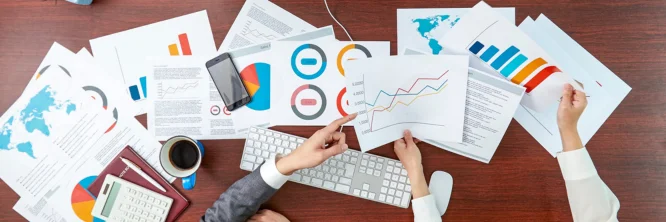We develop in an interconnected universe driven by technology, information, and data, which have become the cornerstone of making intelligent and strategic decisions. The ability to interpret, present and understand data effectively is an invaluable skill in an increasingly competitive and changing environment, so staying up to date in this very new field is not only essential but also fascinating!
Get ready to immerse yourself in an exciting moment of reading in which we will talk about the transformative power of data visualization and its relevance in our current digital world. Let’s start discovering the hidden secrets behind the data!
The current state of the data universe
The rise of social networks, the widespread use of mobile devices and the growing digitalization of services make it possible to collect various information on human activities linked to technology. Since the emergence of the Internet in the 1990s, the ability to generate, process and share data has seen a constant increase. This capacity has increased exponentially, multiplying significantly every few years, which has required the adoption of new prefixes (mega-, giga-, tera-, etc.) to handle numerical quantities that are understandable.
What basic knowledge is needed to work with data visualization?
Currently, the business landscape demands specialists in the different branches covered by the study of data, so, if you have not yet dared to train in this field, we encourage you to do so, because you will have access to incredible job opportunities.
Start learning and working on the following areas!
- Data Management: First, you must understand how data is cleaned and organized for further analysis and visualization.
- Analysis and visualization tools: Familiarize yourself with tools and software such as Tableau, Power BI, Python, R, Excel, among others, to create effective visualizations.
- Visual design concepts: gain basic graphic and visual design knowledge, understanding how to present information clearly and attractively.
- Basic statistics: focus on assimilating simple statistical concepts such as mean, median, standard deviation, correlation, among others, to interpret data.
- Understanding the context: develop your ability to understand the context of the data and the problem that the visualization seeks to solve.
- Communication skills: Last but not least, you need to work on your communication skills to exchange information effectively with the rest of the team. If you end up working with data, remember that you will often have to present the conclusions drawn through visual presentations.
Why is it so important to know how to interpret data?: functions of data visualization
To get the most out of big data work, it is essential to be methodical from the moment you begin mining and extraction. However, even if the entire analysis process is correct, it is very important that it is resolved with good visualization and interpretation. Some of the functions and objectives of data visualization are as follows:
- Clarity and understanding: Simplify complex data so that it is understandable at a glance, making it easier to interpret patterns, trends and relationships.
- Insight identification: allowing you to discover hidden information or relevant insights in the data, which helps in making strategic decisions.
- Effective communication: facilitating the communication of information and findings through visual representations, making the message more accessible and persuasive.
- Comparative analysis: making comparisons between different data sets or variables, facilitating the identification of relationships and contrasts.
- Decision support: provide a solid basis for making informed decisions, based on visual understanding of information.
- Trend and pattern detection: assist in the identification of trends, anomalies, correlations and patterns that can be crucial to understanding the behaviour of the data.
5 top data visualization tools for your company
And to finish this post on an introduction to data visualization, we say goodbye with this recommendation of tools with advanced data visualization functionalities that allow companies to analyze, interpret and present information effectively for strategic decision-making. Write them down!
- Tableau: offers a wide range of interactive visualization capabilities, allowing you to create dynamic charts, tables, and dashboards.
- Power BI: Provides a comprehensive platform for data visualization, connecting various sources and offering advanced analysis options.
- QlikView/Qlik Sense: Provides data discovery and interactive visualization capabilities, allowing you to explore and analyze data intuitively.
- Domo: business intelligence platform that allows you to view and share data in real time, facilitating decision-making based on updated information.
- Looker: Tool focused on data exploration and visualization that integrates with multiple sources, providing detailed and personalized analysis.
Also you can read about the following topics:






